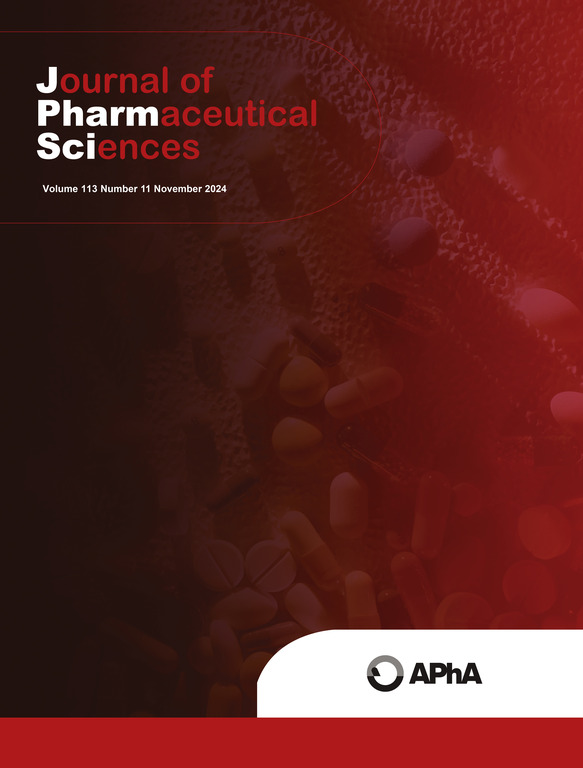综述两种非结合部分模型的可解释性,这两种模型与搅匀模型结合使用,用于预测药物的肝清除率。
IF 3.7
3区 医学
Q2 CHEMISTRY, MEDICINAL
引用次数: 0
摘要
有人提出了非结合组分的假设模型和实验模型,以便根据非结合药物的固有清除率值(体外非结合清除率)和良好搅拌模型(WSM)预测药物的肝清除率(CLH)。假设模型(fu-adjusted)是对体外血浆中测定的未结合部分进行调整,以估计如果血浆中的每种药物蛋白复合物通过任何白蛋白(ALB)促进的肝摄取机制在膜上完全解离,则肝细胞中的最大未结合部分。fu-adjusted 模型还根据膜上的 pH 梯度效应对非结合部分进行了调整。另外,新的实验模型(fu-dynamic)在体外试验中测量了在有血浆和肝酶存在的情况下与蛋白质动态解离动力学所产生的非结合部分。本研究的目的是深入分析之前在相关手稿中利用这些非结合馏分进行的 CLH 预测。此外,本研究还包括一个关于转运体底物的新数据集。最后,重新定义了傅调整的生理基础,以扩大其对更多药物的适用性。在这种情况下,与血浆相比,肝脏中结合蛋白的浓度较低,这也可以解释为什么该器官的未结合组分较高。与其他分析相关的结果表明,一般来说,fu-调整也能提供最准确的CLH预测,因为fu-动态会产生预测不足或预测过高的偏差。对于与 ALB 结合的慢代谢药物,动态赋值的准确性明显低于赋值调整的准确性。在其他药物特性方面,fu-dynamic 的表现要好一些,但总体上仍不比 fu-adjusted 更准确。此外,动态赋形剂的实验值有时并不一致。例如,与α-酸性糖蛋白(AGP)结合的药物与与 ALB 结合的药物相比,并不遵循 fu-动态的原则(即 fu-动态值与体外-非结合 CLint 值不相关)。因此,目前的 fu-dynamic 实验设置在某些情况下可能并不合适。总之,本研究证实,fu-调整值的计算值与 fu-动态值的实验值一样准确,甚至可能更准确。研究还为在 WSM 中使用哪种非结合分数提供了指导。本文章由计算机程序翻译,如有差异,请以英文原文为准。
An overview of interpretability of two models of unbound fraction that are used in combination with the well-stirred model for predicting hepatic clearance of drugs
Hypothetical and experimental models of unbound fraction have been proposed to facilitate predicting the hepatic clearance (CLH) of drugs from values of intrinsic clearance for the unbound drug (CLint-in vitro-unbound) and the well-stirred model (WSM). The hypothetical model (fu-adjusted) is adjusting the unbound fractions determined in plasma in vitro to estimate the maximum unbound fractions at the hepatocytes if each drug-protein complex in plasma becomes fully dissociated at the membrane by any albumin (ALB)-facilitated hepatic uptake mechanism. The model of fu-adjusted is also adjusting the unbound fraction for a pH gradient effect across the membrane. Alternatively, the new experimental model (fu-dynamic) measures the unbound fractions resulting to the dynamic dissociation kinetics from proteins in the presence of plasma and a liver enzyme in an in vitro assay. The objective of this study was to conduct an in-depth analysis of previous CLH predictions made with these unbound fractions in a companion manuscript. Furthermore, a new dataset on transporter substrates was also included in this study. Finally, the physiological basis of fu-adjusted has been redefined to extend its applicability with more drugs. In this case, there are lower concentrations of binding proteins in liver versus plasma that could also explain the higher unbound fractions for that organ. The outcomes associated to additional analyses pointed out that fu-adjusted, again, generally provided the most accurate predictions of CLH because fu-dynamic has generated superior biases of underpredictions or overpredictions. For slowly metabolized drugs bound to ALB, fu-dynamic was definitively less accurate than fu-adjusted. For other drug properties, fu-dynamic fared better but it was still not generally more accurate than fu-adjusted. Furthermore, experimental values of fu-dynamic were sometimes incoherent. For example, drugs bound to alpha-acid glycoprotein (AGP) did not follow the principle of fu-dynamic (i.e., values of fu-dynamic did not correlate with values of CLint-in vitro-unbound) by contrast to those drugs bound to ALB. Therefore, the current experimental setting for fu-dynamic might be unsuitable in some circumstances. Overall, this study confirmed that calculated values of fu-adjusted were as accurate as experimental values of fu-dynamic and can even be more accurate. A guidance on which unbound fraction to use in the WSM is also provided.
求助全文
通过发布文献求助,成功后即可免费获取论文全文。
去求助
来源期刊
CiteScore
7.30
自引率
13.20%
发文量
367
审稿时长
33 days
期刊介绍:
The Journal of Pharmaceutical Sciences will publish original research papers, original research notes, invited topical reviews (including Minireviews), and editorial commentary and news. The area of focus shall be concepts in basic pharmaceutical science and such topics as chemical processing of pharmaceuticals, including crystallization, lyophilization, chemical stability of drugs, pharmacokinetics, biopharmaceutics, pharmacodynamics, pro-drug developments, metabolic disposition of bioactive agents, dosage form design, protein-peptide chemistry and biotechnology specifically as these relate to pharmaceutical technology, and targeted drug delivery.

 求助内容:
求助内容: 应助结果提醒方式:
应助结果提醒方式:


